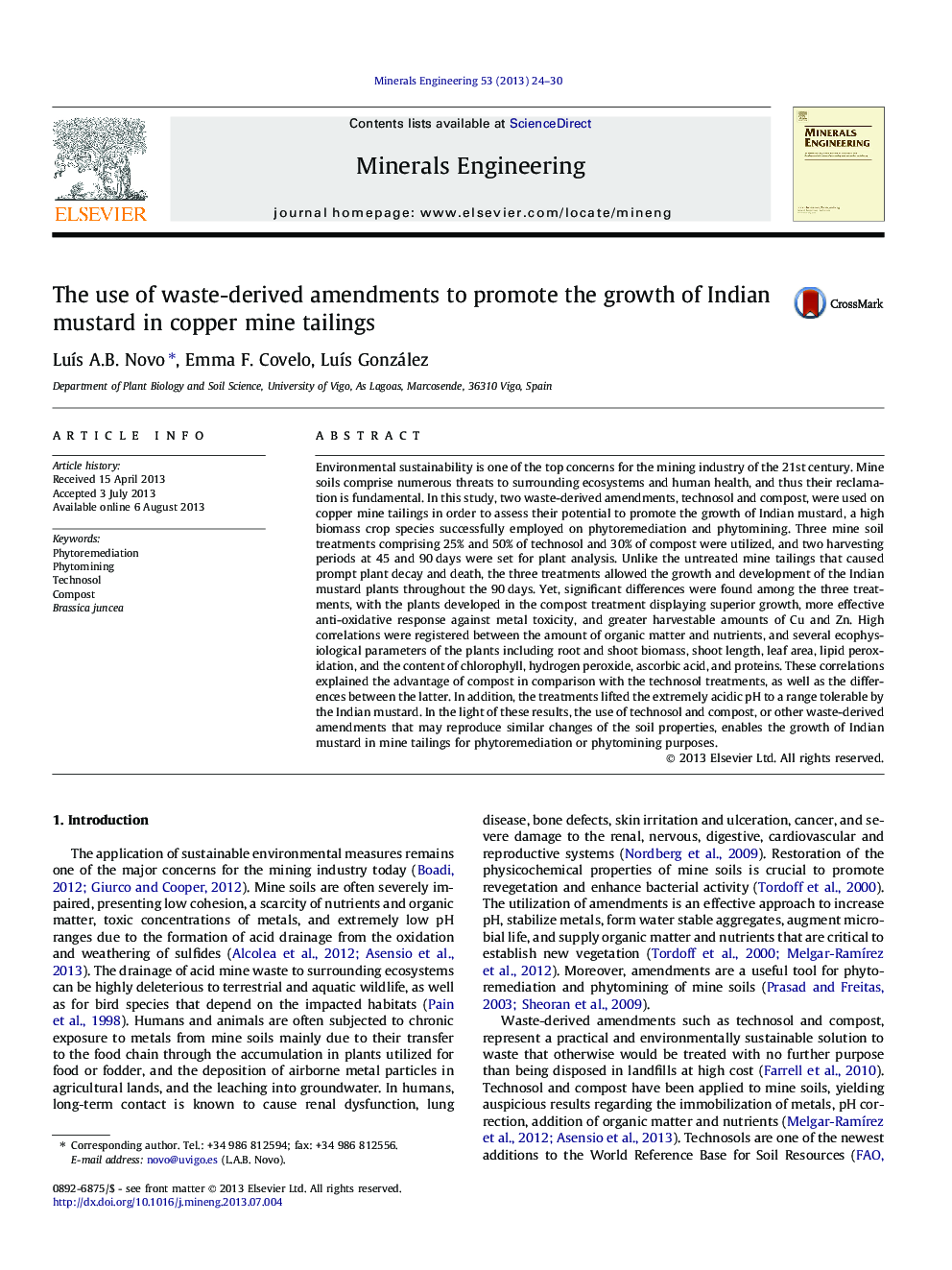| کد مقاله | کد نشریه | سال انتشار | مقاله انگلیسی | نسخه تمام متن |
|---|---|---|---|---|
| 233372 | 465337 | 2013 | 7 صفحه PDF | دانلود رایگان |

• Use of a sustainable environmental strategy, based on waste-derived amendments.
• The amendments allowed the growth of Indian mustard in degraded mine tailings.
• The amendments restored the physicochemical properties of the mine tailings.
• The amendments allow the use of Indian mustard for phytoremediation or phytomining.
Environmental sustainability is one of the top concerns for the mining industry of the 21st century. Mine soils comprise numerous threats to surrounding ecosystems and human health, and thus their reclamation is fundamental. In this study, two waste-derived amendments, technosol and compost, were used on copper mine tailings in order to assess their potential to promote the growth of Indian mustard, a high biomass crop species successfully employed on phytoremediation and phytomining. Three mine soil treatments comprising 25% and 50% of technosol and 30% of compost were utilized, and two harvesting periods at 45 and 90 days were set for plant analysis. Unlike the untreated mine tailings that caused prompt plant decay and death, the three treatments allowed the growth and development of the Indian mustard plants throughout the 90 days. Yet, significant differences were found among the three treatments, with the plants developed in the compost treatment displaying superior growth, more effective anti-oxidative response against metal toxicity, and greater harvestable amounts of Cu and Zn. High correlations were registered between the amount of organic matter and nutrients, and several ecophysiological parameters of the plants including root and shoot biomass, shoot length, leaf area, lipid peroxidation, and the content of chlorophyll, hydrogen peroxide, ascorbic acid, and proteins. These correlations explained the advantage of compost in comparison with the technosol treatments, as well as the differences between the latter. In addition, the treatments lifted the extremely acidic pH to a range tolerable by the Indian mustard. In the light of these results, the use of technosol and compost, or other waste-derived amendments that may reproduce similar changes of the soil properties, enables the growth of Indian mustard in mine tailings for phytoremediation or phytomining purposes.
Journal: Minerals Engineering - Volume 53, November 2013, Pages 24–30